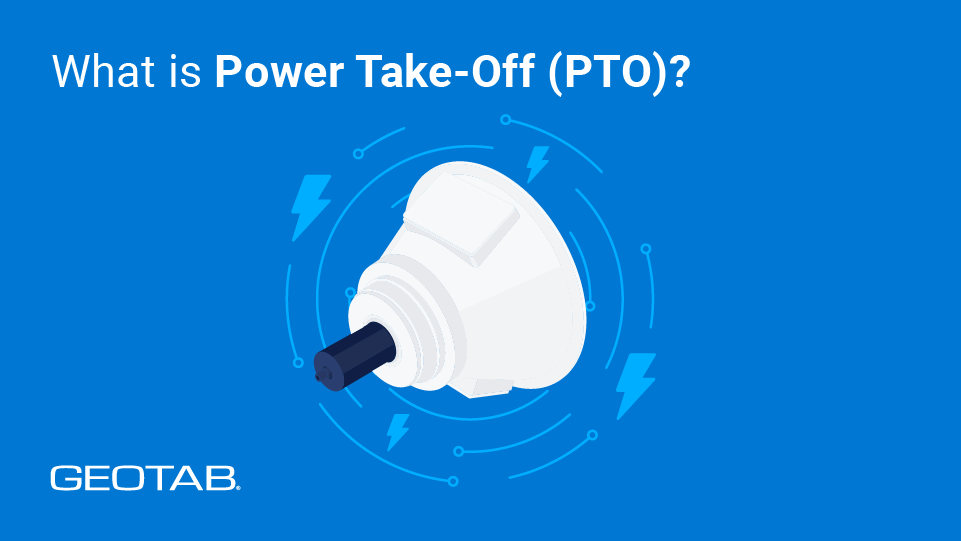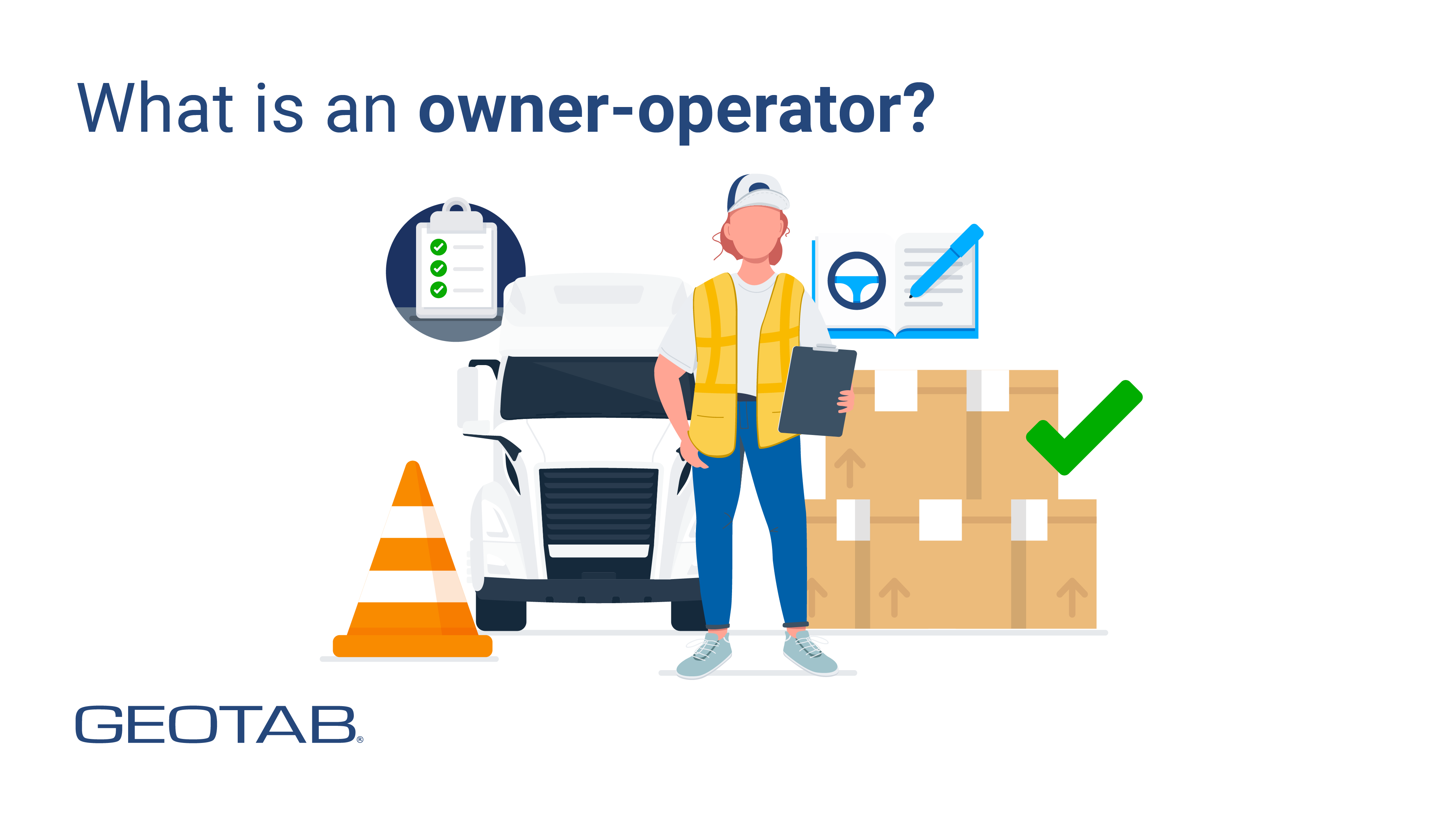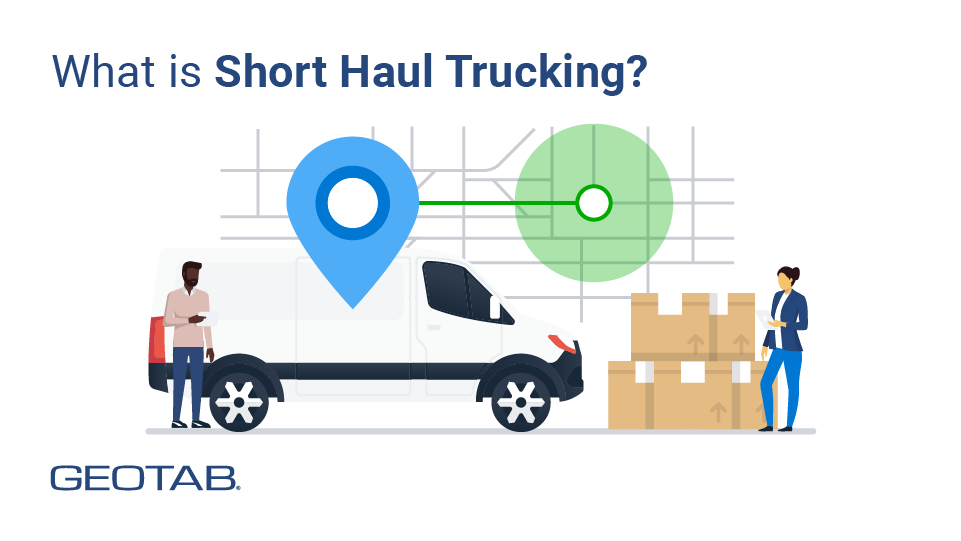What is Power Take-Off (PTO)?
November 28, 2024
•3 minute read

Definition
- A Power Take-Off (PTO) is a mechanism that transfers power from a vehicle’s engine to auxiliary equipment such as hydraulic lifts, pumps or other tools.
- The most common PTO types include side-mount, rear mount, split shaft, reversible and flywheel.
- Fleet managers can use telematics systems to track PTO engagement, helping with optimal usage and identifying patterns that could indicate excessive wear or misuse.
What is Power Take-Off (PTO)?
A Power Take-Off (PTO) is a mechanism that transfers power from a vehicle’s engine to auxiliary equipment, helping workers operate machinery such as hydraulic lifts, pumps or other tools directly from the vehicle. PTO systems enable vehicles to do more than just move cargo or passengers; they are a versatile way to maximize the efficiency of fleet vehicles and equipment. In this post, we will explore how PTO systems work, different types of PTO systems and best practices for optimizing fleet operations, reducing downtime and maintaining safety standards.
How does a power take-off work?
A live-power PTO system uses the rotational power of a vehicle's engine and redirects it to auxiliary equipment through a direct mechanical connection or a hydraulic system. Once the PTO engages with the engine or transmission, it activates the machinery to which it’s connected. After activation, the PTO enables the vehicle to simultaneously move and power external equipment, making it essential for tasks requiring mobile operations like lifting or mowing.
Another type of PTO system is the independent or auxiliary power take-off, which does not connect to a vehicle’s engine. Independent PTOs, used when the vehicle is stationary, are effective for applications that don't require movement or a constant power flow, such as air compressors. There are also hydraulic power take-offs, which rely on hydraulic fluid to transfer power from the vehicle’s engine to an external application. While hydraulic PTOs are more efficient than other PTOs, they also tend to be more costly.
Different types of PTO units
There are many kinds of PTO units, which vary based on their mounting style and intended application. Here’s a breakdown of the most common PTO types:
Side mount: Installed on the side of the transmission, these PTOs are common in trucks and mesh directly with the transmission gear when operating. They are available for nearly all popular transmissions in North America and are relatively easy to maintain.
Rear mount: Common on European trucks, rear-mount PTOs attach to the back of the transmission. These PTOs are driven by the countershaft instead of meshing with a gear, providing them with higher torque limits and making them ideal for high-power applications.
Split shaft: These units are mounted on the driveline, enabling the vehicle to dedicate its entire engine power to the PTO application. This makes these PTOs ideal for applications requiring higher horsepower and torque.
Reversible: Designed for applications like mechanical winches and liquid transfer pumps, reversible PTOs can provide power in two directions. However, as hydraulic drives replace mechanical drives in these applications, reversible PTOs are becoming less common.
Flywheel: These PTOs connect to the engine's flywheel, between the engine and transmission. As the largest PTOs on the market, they are commonly used in heavy-duty applications requiring continuous power, such as generators, blowers, or vacuum pumps.
What is power take-off used for?
PTO systems power a range of equipment used in all kinds of heavy work, including:
- Hydraulic pumps for cranes and lifts
- Mixers and agitators in cement trucks
- Vacuum systems for waste management trucks
- Generators for portable power needs
Fleet managers rely on PTOs to expand the functionality of their vehicles, making sure they can handle specialized tasks efficiently.
Applications of PTOs in various industries
PTO systems are essential across many industries:
Construction: PTOs in heavy equipment like dump trucks, cement mixers and cranes help workers power auxiliary equipment like air compressors, generators or hydraulic pumps needed on a job site without relying solely on the vehicles’ engines.
Agriculture: A tractor's PTO is commonly used to power farm implements like mowers, tillers, hay balers and irrigation pumps by directly connecting to the vehicle’s engine and transferring power through a drive shaft.
Emergency Services: Fire trucks and rescue vehicles rely on PTOs to operate pumps and hydraulic tools needed in critical situations.
Monitoring PTO usage for efficiency
No matter the industry, fleet managers must monitor PTO usage to maintain operational efficiency and reduce wear and tear on their vehicles. Fleet managers can leverage telematics systems to track PTO engagement, helping with optimal usage and identifying patterns that could indicate excessive wear or misuse. Regularly analyzing PTO data can help reduce costly downtime and extend the life of equipment.
Safety precautions when using PTOs
PTOs can be hazardous if not used properly, so it’s important for fleet managers to emphasize safety. Here are some key safety tips for PTOs:
- Keep hands, feet and loose clothing away from the PTO when it’s activated.
- Always make sure the PTO is disengaged when not in use.
- Conduct routine inspections to check for damaged components or leaks.
- Use protective shields or covers to help reduce accidental contact with moving parts.
- Train operators on safe PTO operation and emergency procedures.
To learn more about PTO, explore the frequently asked questions on our community page.
Frequently Asked Questions
PTO on a truck works by redirecting power from the engine or transmission to operate auxiliary equipment. The operator activates the PTO using a switch or lever, engaging the system and powering the attached machinery.
Driving at speed with the PTO engaged can cause significant damage to both the vehicle and the equipment. It may lead to overheating, mechanical strain and premature wear. It’s usually best to disengage the PTO before driving. However, there are specialized cases when very slow movement might be necessary while the PTO is engaged, such as dumping a load. In these cases, drivers must exercise extreme caution and maintain slow speed.
Depending on the vehicle's design and application, PTOs can connect to either the engine or the transmission. Transmission-mounted PTOs are more common in trucks.
A truck PTO can power various equipment, including hydraulic lifts, winches, cement mixers, pumps and generators, making it a versatile tool for many industries.
Other Stories

May 5, 2025
6 minute read

March 20, 2025
4 minute read

March 20, 2025
3 minute read